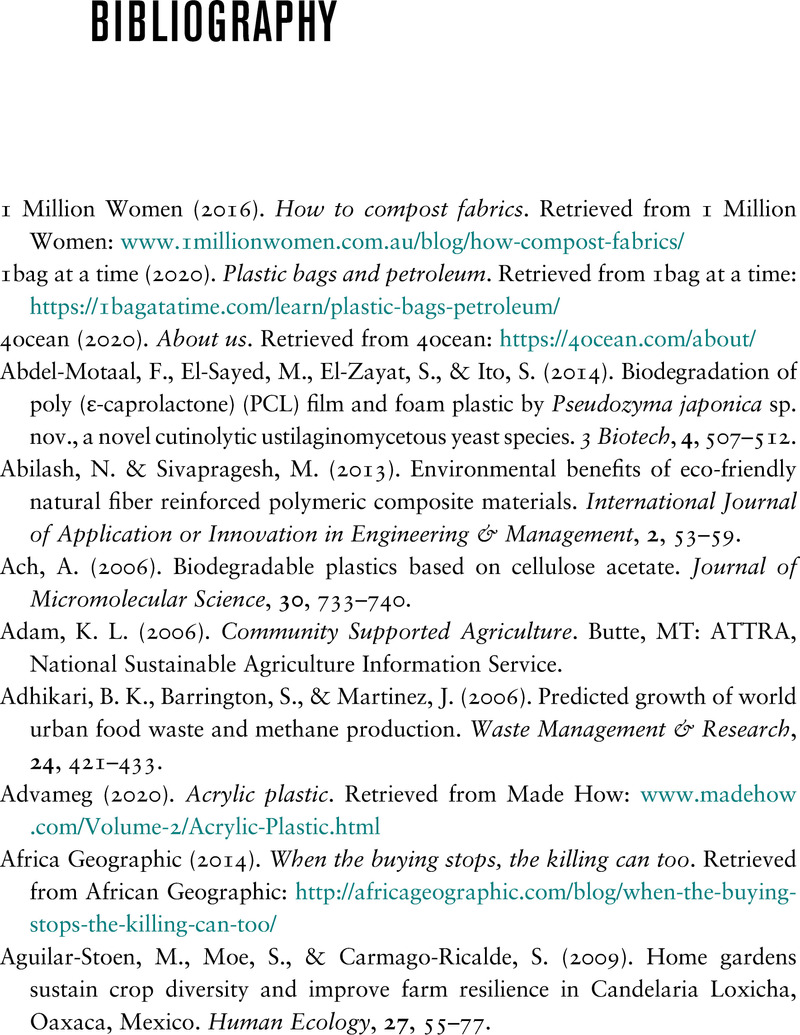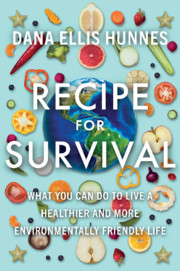Book contents
- Recipe for Survival
- Reviews
- Recipe for Survival
- Copyright page
- Dedication
- Epigraph
- Contents
- Figures
- Tables
- Foreword
- Preface
- Acknowledgments
- Introduction to Part 1
- 1 Agriculture Is a Major Driver of Climate Change (and Disease)
- 2 Politics and Dietary Guidelines
- 3 Overfishing
- 4 Plastic
- 5 Environmental Exploitation
- 6 Species Exploitation for Entertainment
- 7 The Positives
- 8 Part 2: Protecting Earth, One Recipe at a Time – An Introduction
- 9 Epilogue/Conclusion
- Appendix Recipes You Can Use
- Notes
- Bibliography
- Index
- References
Bibliography
Published online by Cambridge University Press: 06 January 2022
- Recipe for Survival
- Reviews
- Recipe for Survival
- Copyright page
- Dedication
- Epigraph
- Contents
- Figures
- Tables
- Foreword
- Preface
- Acknowledgments
- Introduction to Part 1
- 1 Agriculture Is a Major Driver of Climate Change (and Disease)
- 2 Politics and Dietary Guidelines
- 3 Overfishing
- 4 Plastic
- 5 Environmental Exploitation
- 6 Species Exploitation for Entertainment
- 7 The Positives
- 8 Part 2: Protecting Earth, One Recipe at a Time – An Introduction
- 9 Epilogue/Conclusion
- Appendix Recipes You Can Use
- Notes
- Bibliography
- Index
- References
Summary

- Type
- Chapter
- Information
- Recipe for SurvivalWhat You Can Do to Live a Healthier and More Environmentally Friendly Life, pp. 249 - 297Publisher: Cambridge University PressPrint publication year: 2022

